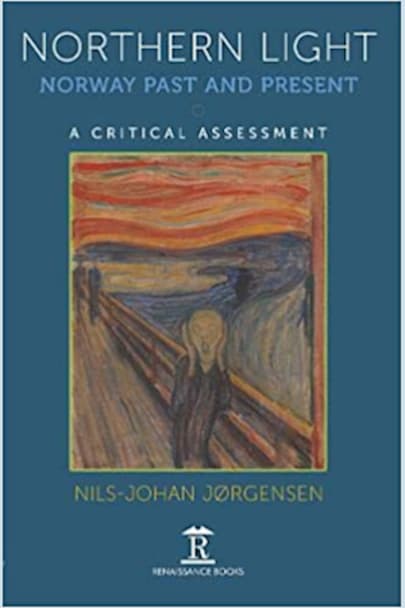This title discusses what it means to be Norwegian, in the past and now. It briefly turns to Norway’s history in a European context, largely unknown outside (and even within) Norway. This is for anyone who looks to Norway and wishes to discover why she survived and became a distinct rich nation. She is a young state and an old nation.



To this reviewer’s mind this is an indispensable ‘guidebook’ for anyone wishing to learn about Norway and the Norwegians; what made the country and its people the way they are today. Yes, I use the word ‘guidebook’ to describe this work, though certainly not in a flippant way, because although the book is brimming full of facts, quotations, etc., to substantiate the author’s literary stance, it is not some boring academic tome, but is light and easy to read and structured so that the reader can dip in and out of it should they wish to. This is not just a ‘read once’ book, but one which one can come back to, so as to refresh the memory on a particular aspect, and it is for this reason that I describe it as a ‘guidebook’.
After an introduction, the book is divided into fourteen chapters, each dealing with a different element or aspect. The first three deal with Norway’s history; its proud Viking past, its sudden decline and then its gradual recovery. Then follows a chapter on Norway’s unusual, indeed, one might say unique, independence story; an understanding of which is fundamental to appreciating the ‘why’ of the structure and governance of the modern day country. This chapter is closed with the desired Norwegian stance on neutrality. However, the shattering of this by the German invasion and occupation and the effect that this had in forcing Norway to ‘take a side’, it dealt with in the following chapter.
Having partially set the stage, Nils-Johan Jorgensen then explains the evolution of the political parties, gives a taste of life before and after Ibsen (Norway’s most famous playwright), an introduction to the arts in Norway and how the Nobel Peace Prize came to be a Norwegian award (Alfred Nobel was Swedish).
The author then returns to Norway’s conflicting desire for neutrality yet requirement of defence and hence its attitude towards NATO, and likewise its desire both to be part of Europe and yet at the same time not to be. This contradictory stance it is argued stems from Norway’s relationship with the sea and the author deftly returns the reader to Norway’s Viking heritage, dealt with in an earlier chapter, to explain how this influences the Norwegian view of the world. This in turn leads into the country’s relationship with Russia, both because they have a common land border, but also because both countries have a history connected with the sea and the Arctic and so claims to sections of it.
As already mentioned, each chapter can be read as part of the whole, or can be dipped into and read on its own. Given the scope of some of the chapters and the volume of facts contained within them, this later aspect is a desirable and useful one for readers who are new to the whole subject of ‘Norway’.
The final chapter on Self Image and Reality is a particularly intriguing one and to my mind explains a lot about modern day Norwegian attitudes. Nils-Johan Jorgensen describes how on the one hand modern day Norway is a newly rich country due to the discovery of oil and yet on the other how the Law of Jante {Janteloven, originally conceived by Danish – Norwegian author Aksel Sandemose in his satirical work of 1933, A Fugitive Crosses His Tracks (En flyktning krysser sitt spor), which denigrates individual achievement}, has almost ceased to be taken as satirical and now permeates much of Norwegian life. Whereas the ‘equality’ which is presented both in Janteloven and Norwegian society is possible in an oil rich country, Nils-Johan Jorgensen argues, perhaps controversially for Norwegians, that this needs to change and that the Norwegians of a ‘post oil financed society’ will need to start acknowledging individual achievement and accepting inequality.
All in all a fascinating read and one I heartily recommend to all who wish to find out more about Norway and what makes the modern Norwegian tick.